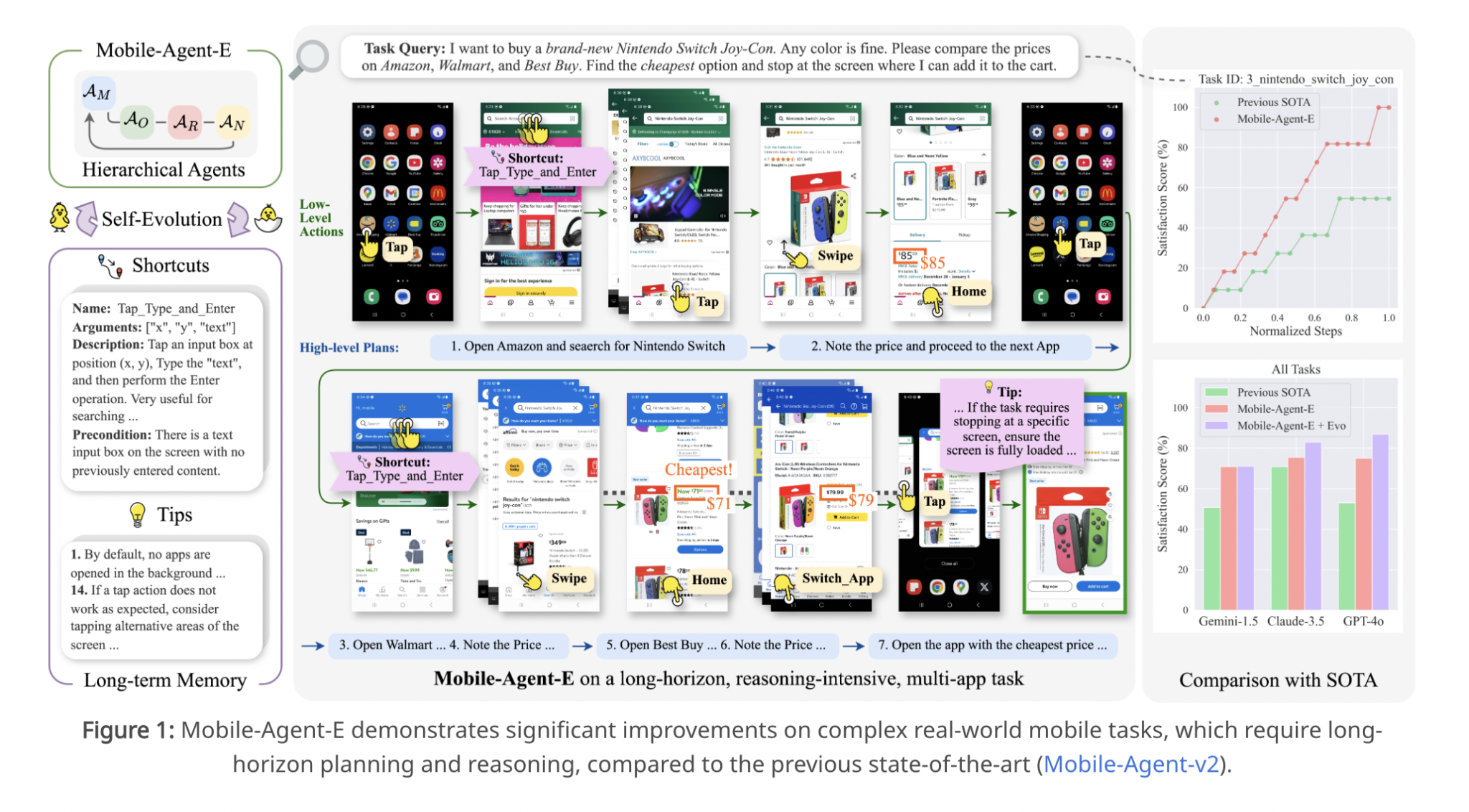
Mobile-Agent-E: Revolutionizing Smartphone Task Management
Smartphones are vital in our daily lives, but using them can be frustrating due to complex tasks. Navigating apps and managing multiple steps takes time and effort. Fortunately, advancements in AI have led to the development of large multimodal models (LMMs) that allow mobile assistants to handle complex operations automatically.
Challenges with Current Mobile Assistants
Many mobile assistants struggle with tasks that require long-term planning and adaptability. For example, creating itineraries or comparing prices involves multiple steps and platforms. Current systems treat each task separately, lacking the ability to learn from past experiences, which results in inefficiency. Additionally, treating all tasks the same way reduces effectiveness, especially for more complex scenarios.
Introducing Mobile-Agent-E
Researchers from the University of Illinois Urbana-Champaign and Alibaba Group have developed Mobile-Agent-E, a new mobile assistant designed to overcome these challenges. It uses a hierarchical multi-agent framework with a Manager agent that plans and breaks tasks into smaller goals, supported by four specialized agents:
- Perceptor: Focuses on visual perception.
- Operator: Executes immediate actions.
- Action Reflector: Verifies errors.
- Notetaker: Aggregates information.
Self-Evolution and Memory
Mobile-Agent-E features a self-evolution module with a long-term memory system that includes:
- Tips: General guidance based on past tasks.
- Shortcuts: Reusable sequences of actions for recurring tasks.
This system learns from feedback, updating its Tips and creating new Shortcuts based on user interactions, similar to how humans remember and improve their processes.
Performance and Efficiency
Mobile-Agent-E has been tested with a new benchmark called Mobile-Eval-E, showing a 15% increase in task completion rates and higher satisfaction scores compared to existing models. Its Shortcuts reduce computational overhead, making tasks faster without losing accuracy. For instance, combining actions like “Tap,” “Type,” and “Enter” into a single Shortcut can save time and improve efficiency.
Key Benefits of Mobile-Agent-E
- Efficient task delegation through a specialized agent structure.
- Continuous updates to Tips and Shortcuts to enhance performance.
- Faster task execution with reduced resource use, achieving a 20% decrease in completion time.
- Versatile capabilities for various tasks like planning itineraries and managing notes.
Conclusion
Mobile-Agent-E bridges the gap between user needs and technology. Its advanced design improves task management and decision-making, setting a new standard for mobile assistants. This research showcases the potential of AI to transform how we interact with technology, making it more accessible and intuitive.
For more information, check out the Paper, GitHub Page, and Project Page. Follow us on Twitter, join our Telegram Channel, and connect with our LinkedIn Group. Join our 70k+ ML SubReddit for more insights!
Transform Your Business with AI
Stay competitive by leveraging Mobile-Agent-E. Here’s how:
- Identify Automation Opportunities: Find customer interaction points that can benefit from AI.
- Define KPIs: Ensure measurable impacts from your AI initiatives.
- Select an AI Solution: Choose tools that fit your needs and allow customization.
- Implement Gradually: Start with a pilot project, gather data, and expand usage wisely.
For AI KPI management advice, contact us at hello@itinai.com. For ongoing insights, follow us on Telegram or @itinaicom.
Discover how AI can enhance your sales processes and customer engagement at itinai.com.


























